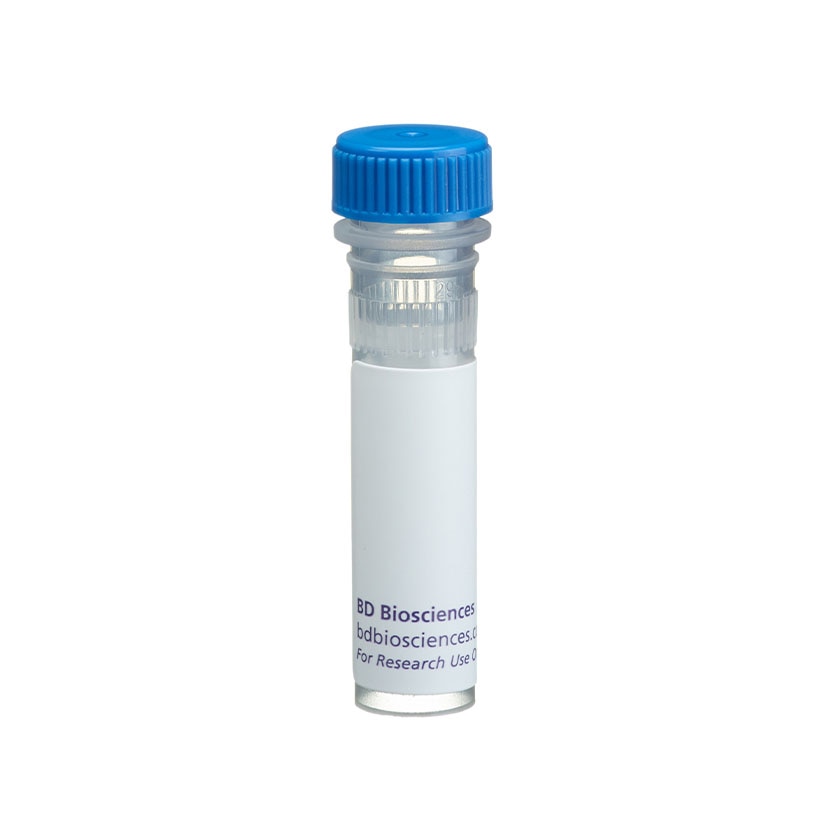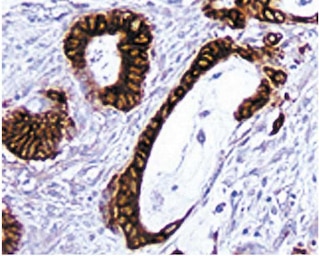Old Browser
This page has been recently translated and is available in French now.
Looks like you're visiting us from {countryName}.
Would you like to stay on the current country site or be switched to your country?




Immunohistochemical staining of CD144. Frozen sections of normal mouse small intestine were reacted with the anti-CD144 antibody. Cells expressing VE-Cadherin can be identified by the brown labeling of their cell membranes. Amplification 20X.


BD Pharmingen™ Purified Rat Anti-Mouse CD144

Regulatory Status Legend
Any use of products other than the permitted use without the express written authorization of Becton, Dickinson and Company is strictly prohibited.
Preparation And Storage
Recommended Assay Procedures
Immunohistochemistry: The 11D4.1 antibody (Cat. No. 550548) is recommended to test for immunohistochemical staining of acetone-fixed frozen sections. The isotype control recommended for use with this antibody is purified rat IgG2a (Cat. No. 559073). For optimal indirect immunohistochemical staining, the 11D4.1 antibody should be titrated (1:10 to 1:50 dilution) and visualized via a three-step staining procedure in combination with biotinylated polyclonal anti-rat Ig (multiple adsorbed) (Cat. No. 559286) as the secondary antibody and Streptravidin-HRP (Cat. No. 550946) together with the DAB detection system (Cat. No. 550880). The clone 11D4.1 is not recommended for formalin-fixed paraffin embedded sections.
Product Notices
- Since applications vary, each investigator should titrate the reagent to obtain optimal results.
- Caution: Sodium azide yields highly toxic hydrazoic acid under acidic conditions. Dilute azide compounds in running water before discarding to avoid accumulation of potentially explosive deposits in plumbing.
- Source of all serum proteins is from USDA inspected abattoirs located in the United States.
- An isotype control should be used at the same concentration as the antibody of interest.
- This antibody has been developed for the immunohistochemistry application. However, a routine immunohistochemistry test is not performed on every lot. Researchers are encouraged to titrate the reagent for optimal performance.
- Please refer to www.bdbiosciences.com/us/s/resources for technical protocols.
Companion Products





The 11D4.1 antibody monoclonal antibody specifically binds to mouse CD144, also known as VE-cadherin. CD144 is a type I transmembrane protein and is a member of the cadherin superfamily. VE-cadherin is an endothelial cell-specific, homophilic adhesion molecule. It is concentrated at interendothelial cells contacts and is thought to be involved in the maintenance of cell layer integrity. In vitro and in vivo studies indicate that the 11D.4 mAb interferes with VE-cadherin-mediated intercellular adhesion.
Development References (3)
-
Breier G, Breviario F, Caveda L, et al. Molecular cloning and expression of murine vascular endothelial-cadherin in early stage development of cardiovascular system.. Blood. 1996; 87(2):630-41. (Biology: Immunohistochemistry). View Reference
-
Gotsch U, Borges E, Bosse R, et al. VE-cadherin antibody accelerates neutrophil recruitment in vivo. J Cell Sci. 1997; 110(5):583-588. (Immunogen: Blocking, Immunoprecipitation). View Reference
-
Lampugnani MG, Resnati M, Raiteri M, et al. A novel endothelial-specific membrane protein is a marker of cell-cell contacts.. J Cell Biol. 1992; 118(6):1511-22. (Biology). View Reference
Please refer to Support Documents for Quality Certificates
Global - Refer to manufacturer's instructions for use and related User Manuals and Technical data sheets before using this products as described
Comparisons, where applicable, are made against older BD Technology, manual methods or are general performance claims. Comparisons are not made against non-BD technologies, unless otherwise noted.
For Research Use Only. Not for use in diagnostic or therapeutic procedures.
Report a Site Issue
This form is intended to help us improve our website experience. For other support, please visit our Contact Us page.